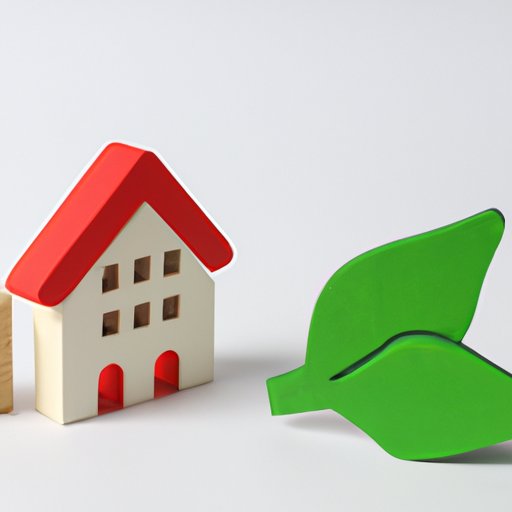
I. Introduction
Building your own home can be an exciting and rewarding experience. Not only do you get to create the space of your dreams, but you also have the opportunity to customize every detail to fit your unique needs and preferences. In this article, we will explore the various stages of the building process and provide practical tips for creating your own dream home.
II. Step-by-Step Guide: Building Your Own Dream Home
Creating a plan is crucial when building your own house. You need to determine the purpose, budget, and design of your home before anything else. As you move forward, each stage of building has a process of its own. Here are some stages:
- Designing the layout and blueprints: This includes creating a rough design of the interior and exterior layout of the property. A blueprint will ensure that you have a clear understanding of square footage, room placement, and any unique features you want to include in the design.
- Securing financing: Unless you are in a position to pay for the construction cost in cash, you will need a construction loan or mortgage to finance your project. Choose the most competitive rates and fees while searching for a lender.
- Finding contractors: You can either hire a general contractor to oversee the project by hiring subcontractors or hire specialized contractors directly. If you’re going for the latter, there is a need to check the contractors’ licenses, certifications, and insurances.
- Construction: Once you have all your requirements, it is time to manage the construction process: document progress, approve inspections, and make final payments to contractors until your dream home is ready to be lived in.
III. Sustainable and Affordable: Building a Green Home on a Budget
Building a green home is both cost-efficient, and eco-friendly in the long run. By using eco-friendly building materials and incorporating renewable energy systems, you can cut energy costs. Consider these tips when building a green home:
- Use eco-friendly building materials: Materials like bamboo, recycled metal, and concrete can be used to create beautiful, durable, and sustainable buildings.
- Maximize energy efficiency: Utilize a solar panel, an eco-friendly water heating system, or an efficient HVAC during construction to minimize energy spending in the house.
- Create a low-maintenance landscaping: Design your property to be low-maintenance and sustainable landscape. This can minimize costs associated with water usage and maintenance.
IV. From Start to Finish: What to Know Before You Build Your Own Home
Before diving into building a dream house, try to understand the process. Here are some things to consider:
- Understand local building codes: Before going forward with your project, you must seek advice on local regulations with regard to home building permits, inspections and any necessary approvals for building construction plans.
- Work with the right team: Choosing the right team for the job is important to ensure a successful build. Include a designer, architect, general contractor, electrician, and plumber, to manage the construction process.
- Always budget: Make sure to calculate all costs related to construction, including permits, environmental review permits, and infrastructure upgrades before the construction process begins.
V. DIY or Hire a Pro? Deciding Which Building Method is Right for You
Decisions must be made on whether you should go solo or work with professionals like a custom home builder or prefabricated home builder. Here are some of the pros and cons of each option:
- DIY: If you are looking to save costs, a DIY approach is an option though it comes with greater risk. Finding reliable and low-cost contractors can also lead to problems.
- Custom home builder: Getting a custom home builder has the advantage of taking up less time and ensuring that the building meets industry standards but it may also be an expensive choice.
- Prefabricated Home Builder: You can save money and time on your construction project by building your home in a manufacturing plant, where costs, materials, and construction time can be kept to a minimum, it can also limit the ability to customize some things such as layout and style options
VI. Building Your Dream Home: Creative Design Ideas to Consider
Design your home to fit your personal preferences with some design inspirations and ideas for each room:
- Kitchen: Customize the cabinets, noticeable tiles, lighting, countertops, and appliances.
- Living Room: Add splashes of color, natural light, and comfortable furnishings.
- Bathroom: Consider the addition of a free-standing bathtub, dual sinks, large mirrors, and a recessed shower.
- Bedroom: Incorporate built-in storage for your clothes, a comfortable window view, or a beautiful fireplace to enjoy your sleep time.
VII. Conclusion
Building your own house is a significant investment. You can enjoy the creativity of designing your space while ensuring it meets perfect standards. By following the steps provided and choosing the style and design that works best for you, you’ll build a dream house that you’ll love for years to come.




